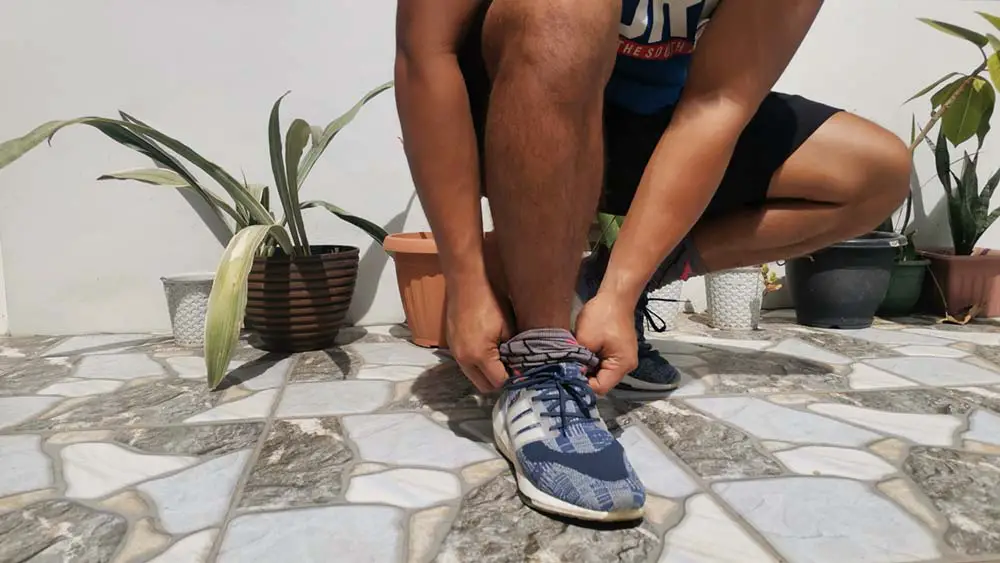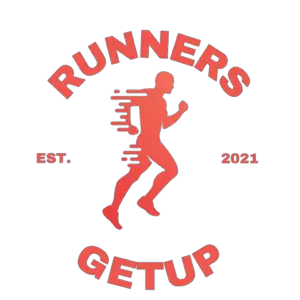This post contains affiliate links.

It’s a nice day so you decided to run outdoors only to be met with frustration because your socks keep sliding down. You wonder why that is so you researched the common reasons why that happens and how to prevent it from happening again.
In general, your socks slide down because your socks don’t fit you right or they have lost their elasticity. To prevent them from sliding down, you should choose high-quality socks that fit you right. Also, replace socks that are worn out and have lost their elasticity.
Ahead, we will go deeper into the common reasons why your socks slide down and what we can do to solve it. I will also give you some advice on how to pick running socks that don’t slide down together with some recommendations of my favorite running socks. Let’s get started!
#1 Your Socks Don’t Fit You
One of the most common reasons why your running socks slide down is because you picked the wrong size in the first place. According to soxy.com, there are 4 different options for manufacturers to size the socks:
- Men/Women
- S/M/L/XL
- Depending on shoe size
- Free-size
Good sock manufacturers make different sizes or even different sizing per gender. This helps you pick a sock that fits your foot just right. The problem lies when you go with the free-sizing or the one size fits all option.
The heel cup—the part of the sock that holds the heel—almost always isn’t in the right place if you wear free-sizing socks. The heel cup is important in preventing the sock from sliding down. Once the heel cup is off your heel, there’s no stopping the socks from sliding down or feeling uncomfortable.
Sure, you may get lucky where the one size fits you just right, but for those who aren’t so lucky, you’re bound to be wearing socks that slide down every 10 mins or so.
How to solve it:
Never buy one size fits all socks, especially if you use them for running.
Choose socks that closely resemble your feet. You may find that the sizing is based on shoe size or the more common small, medium, and large sizing. Sock manufacturers have different sizing guides for their socks, make sure you check them out before purchasing.
The socks should fit snug to your feet. There should be no excess fabric and the heel cup should fit right into your heel.
#2 Poor Quality Socks
Maybe you just went with the cheapest option you can buy not knowing that the quality of that socks will cause many problems along the road.
Sometimes, what you get for paying cheap is a sock that doesn’t fit right and is made with low-quality materials that are just bound to slide down when you use them for a vigorous activity like running.
How to solve it:
Only buy socks from known manufacturers which have good reviews. That way, you’ll get the most value out of your money. My favorite brands are:
#3 They’re Stretched Out
Sometimes the running socks are just too old and stretched out that sliding down is inevitable. On average, running socks can last from 6 months to a year depending on the frequency of use and the quality of the socks. After that, socks may begin to stretch out where you can no longer feel the compression.
Of course, some socks will last shorter or longer depending on the same factors I mentioned above. If they start sliding down or have holes, that’s usually the time to replace them regardless of the time frame.
How to solve it:
In this case, there’s really not much you can do besides replace your socks. There’s really no point in trying to keep a sock that gives you lots of problems when you run.
#4 Your Shoes Are Too Big
If you followed my advice on how to choose your running socks and the socks still slide down, the problem might not be the socks but your shoes.
When your shoes are big, your foot slides inside the shoe during the run. The constant friction between the socks and the shoe can pull your socks downward gradually, resulting in the sliding down of your socks.
How to solve it:
There are two ways to solve this. (1) find a shoe that fits you right in the first place. Running shoe that doesn’t fit causes many problems including the possibility of developing blisters. Find out how your running shoes should fit by reading this article.
(2) Wear thicker socks if your shoes aren’t that loose. Thicker socks create more snugness inside the shoe preventing them from sliding inside the shoe.
(Related: Thick Or Thin Running Socks: Which One Should Your get?)
#5 You’re Washing Them Wrong
If you’ve tried buying a sock that fits you really well the first few days and then after washing them several times, you noticed that they lost their elasticity and they began to cause problems, you may be washing them the wrong way.
Socks have elastic materials which are sensitive to different chemicals and temperatures. If you wash them the wrong way, it can cause the degradation of the very thing that makes it grip—its elasticity.
How to solve it:
To find out the right way to wash running socks, I researched and found an article posted by windetergent.com. Here are the takeaways from their article:
- Use the appropriate detergent – they are designed for synthetic fibers such as polyester, nylon, and elastane which are commonly found in your running socks and other activewear. Use detergents like WIN sports detergent.
- Avoid chlorine bleach – Chlorine bleach can degrade the fabric that makes up the socks and affect their elastic properties.
- Avoid using the dryer – Dryers dry clothes faster by using heat. The problem is, it can weaken the elasticity of your socks. Air dry them instead. It will take longer for them to dry but it will make them last longer.
- Wash with gentle cycle – Gentle cycle limits the wear and tear in your clothes. It is the machine setting equivalent to hand washing. This is the commonly recommended method for garments made of wool—also a common fabric used in running socks. Avoid using hot water to prevent the breakdown of the sock’s components.
In Choosing Socks That Doesn’t Slide Down
So, how do you choose a sock that doesn’t slide down? I’ve already mentioned above most of the things I listed here, however, it’s worth summarizing all of them in a list so you can use this as your buying guide.
- Invest in proper running socks– The most important part of this process is that you invest in real running socks, not the regular socks sold in packs (see what’s the difference between them here). Running socks are made specifically for the sport of running. That said, most running socks will have the right fit and compression suited for the activity so it doesn’t slide down when you’re running.
- Pick the right size – As mentioned earlier, the sizing of the socks matters a lot. Choose socks that have a sizing closest to your foot size, not the ones sold as free sizing or have very wide ranges. The heel cup should be right on the heel and the socks should fit snugly. There should be little to no excess fabrics.
- Avoid mid-calf socks – The problem with midcalf socks is that the cuff’s circumference is right at the widest part of your leg. When it slides down (and it will), the cuff of the sock is bigger than your lower leg which makes the sock’s cuff useless. Based on my experience, no-show socks and crew socks work best for me.
Alternatively, you can use a body adhesive that makes the sock stick better. Dancers use them a lot. You can get them on Amazon.
If you want the full guide in choosing the right running socks, I made an article about that. This link will direct you to that article.
Also, I made a list of running socks that I’ve tried and don’t slide down. Check it out.
My Favorite Running Socks
If you want to take a quicker approach and just use the same socks I use, here are my recommended running socks for different situations:
- For cold weather: SmartWool socks – they are thicker and warmer than the other socks that I’ve tried.
- For hot weather: Balega Silver No-Show Socks
- If you get frequently blisters in between your toes: Injinji socks
- For trail running: MudGear Premium Compression Socks
